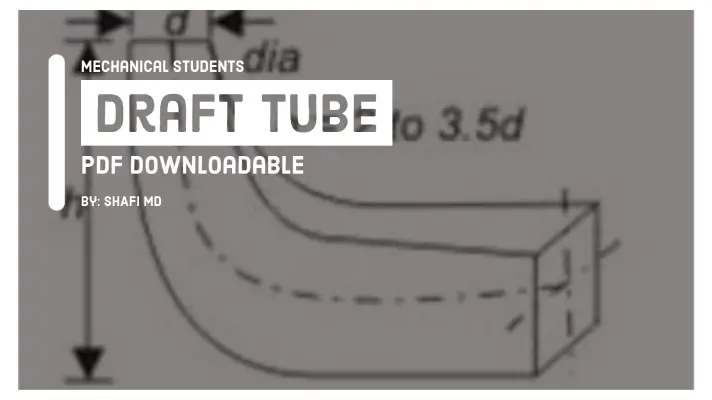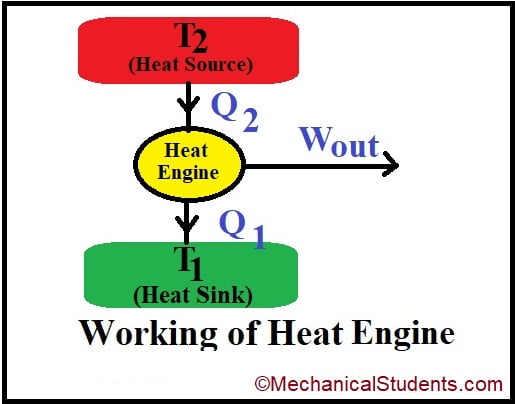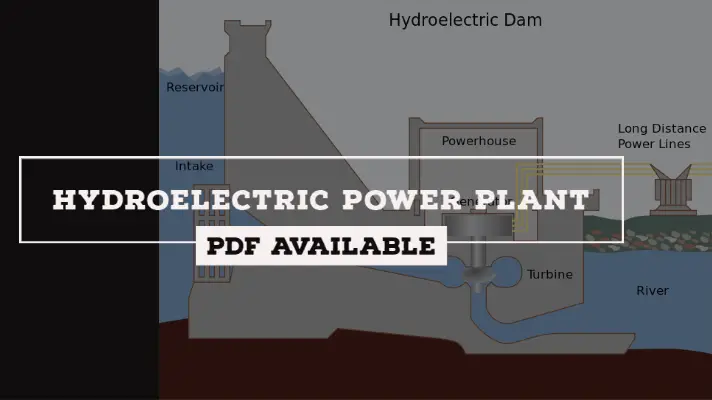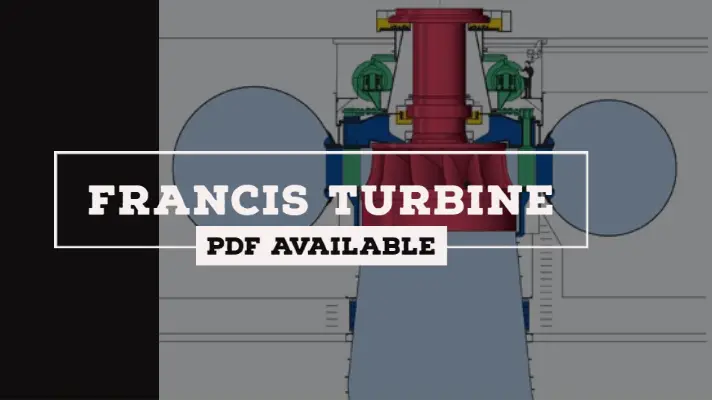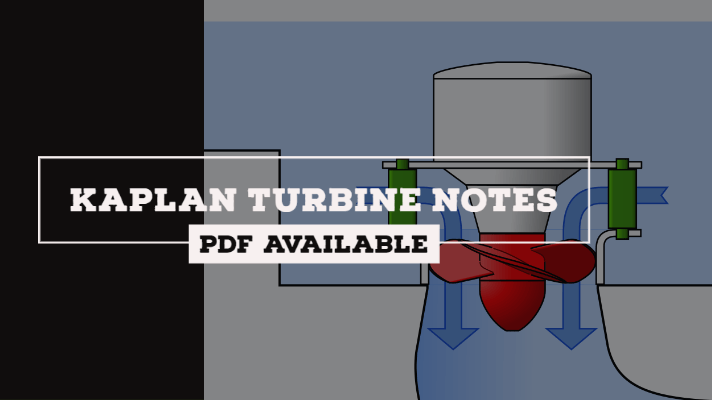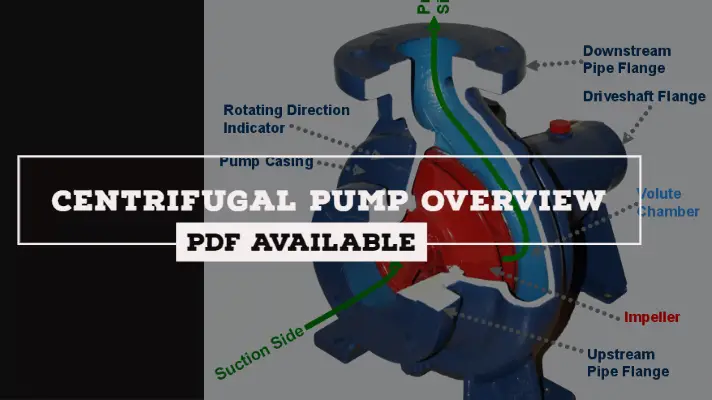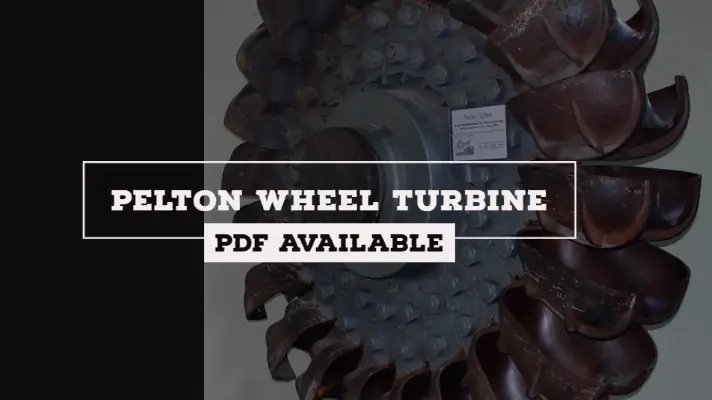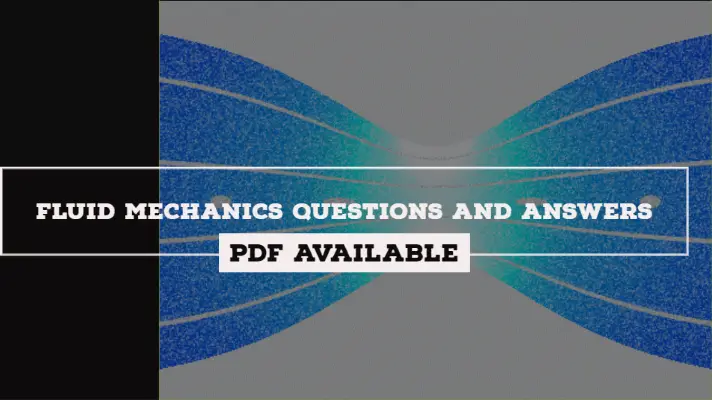Hydraulic Turbine: Definition, Classification, Advantages, Disadvantages & Applications [PDF]
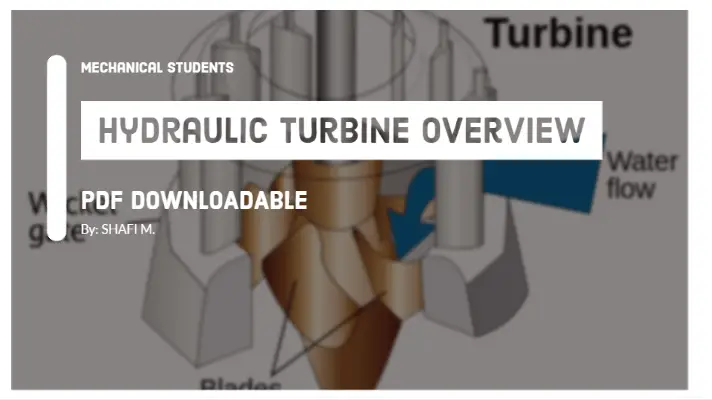
Hydraulic turbine or water turbine is a rotary machine that converts potential energy and kinetic energy of water into mechanical work. In this article, we are going to discuss the Hydraulic Turbine along with its Definition, Classification, Advantages, Disadvantages & Applications.
Before going into the main topic, let's see the difference between Turbine and pump.
Difference between Turbine and Pump:
If a machine transforms mechanical energy into hydraulic energy it is called a pump whereas, If a machine transforms hydraulic energy into mechanical energy it is called a Turbine.
Thus in turbines, fluid does work on the machine, and the machine produces power. but, the pump absorbs the power, and work is done on the fluid.
What is Hydroelectric Power?
The mechanical energy developed is utilized for running an electric generator which is directly coupled to the shaft of the turbine. The electric power developed by the electric generator is known as hydroelectric power.
So, the generation of hydroelectric power is cheaper than the other resources like coal, oil, etc.
Some parts of the hydroelectric power plant are a reservoir, dam, gates, surge tank, penstock, turbine, generator, etc.
What is Hydraulic Turbine?
Hydraulic Turbine is the main prime over which helps to converts hydraulic energy into electrical energy by the help of a generator. When a stream of water is hit the blades of the turbine, it forces the turbine to rotate hence there is a generator fitted with the turbine so the generator has also come in rotation and produces the electrical energy.
Classification of Hydraulic Turbines:
The hydraulic Turbines were classified according to the following conditions.
- The direction of flow of water
- Available head
- Specific speed
- Action of water
An Explanation for the Classification of Hydraulic Turbines is as follows.
1. Classification of Turbine based on the direction of flow of water:
- Tangential Flow:
If the water strikes the blades of the runner tangential to the path of rotation called Tangential flow.
For example, Pelton wheel turbine.
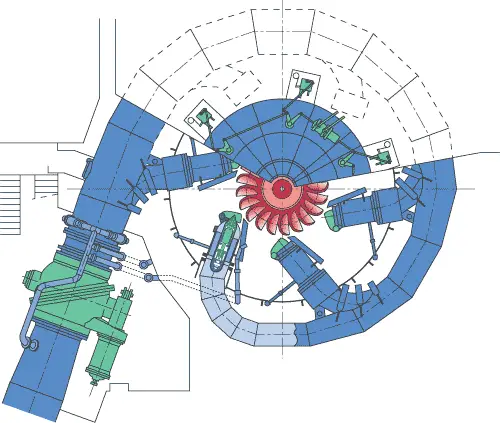
- Radial Flow:
If the water strikes the blades of the runner radially and coming out axially called as Radial flow.
For example, Francis turbine
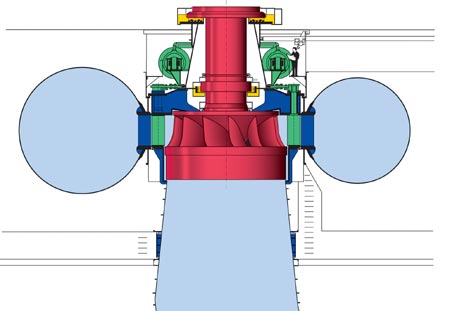
- Axial Flow:
In this flow, the water flows parallel to the axis of the turbine.
For example, Kaplan turbine
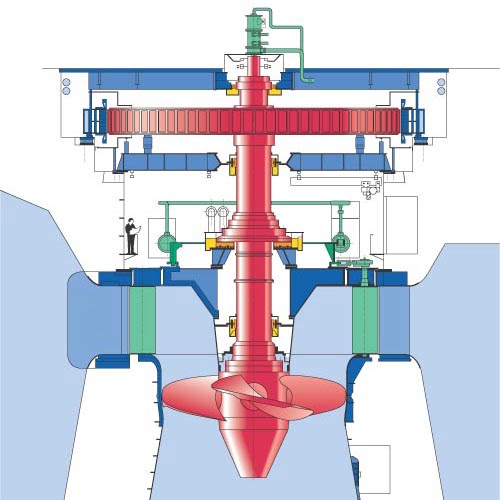
2. Classification of Turbine based on Available head:
- High head:
The turbine capable of working under the high potential head of water above 300m
For example, Pelton wheel turbine.
- Medium head:
The turbine is capable of working under a medium range of potential head about 60m to 300m
For example, Francis turbine.
- Low head:
The turbine is capable of working under a low range of potential head less than 60m
3. Classification of Turbine based on Specific speed:
- Low Specific Speed:
Turbine works in the range of 10-50.
For example, Pelton wheel turbine
- Medium Specific Speed:
Turbine works in the range of 50-350.
For example, Francis turbine
- High Specific Speed:
Turbine works in the range of 250-850.
For example, Kaplan turbine
4. Classification of Turbine based on Action of water:
- Impulse:
There is no pressure drop on the runner or rotor. Kinetic Energy of water coming from the jet is used to run the runner or rotor.
For example, Pelton wheel turbine.
- Reaction:
There is a loss of Kinetic Energy as well as pressure energy on the runners of the blade.
For example, Francis turbine
Difference between Impulse and Reaction Turbine:
The difference between impulse and reaction turbine is shown below in a tabular column.
| Impulse Turbine | Reaction Turbine |
|---|---|
| Available energy is converted into kinetic energy | A major part of available energy is converted to pressure energy |
| Pressure in the turbine is constant | Pressure gradually reduces while water flows on the turbine blades |
| The wheel and the blades should have access to free air and must not run fully. | The blades are always under the action of pressure, the wheel must always run fully. |
| Only one face of the blade is active | Both sides |
| Regulation of flow and power is easier without loss of energy | Difficult |
| Used for high heads | Low and medium heads |
| Efficiency is less | Efficiency is more |
| Energy transfer is a change in energy | Due to a change in pressure head |
So, let's Discuss How a Hydraulic Turbine Work?
In general, the principal component of a turbine is a rotor. The rotor is a wheel carrying a number of plates and vanes on its periphery.
The rotor is housed in a stationary casing and water possesses a good amount of potential energy which is allowed to flow through pipes and finally discharged through nozzles and thus gaining kinetic energy.
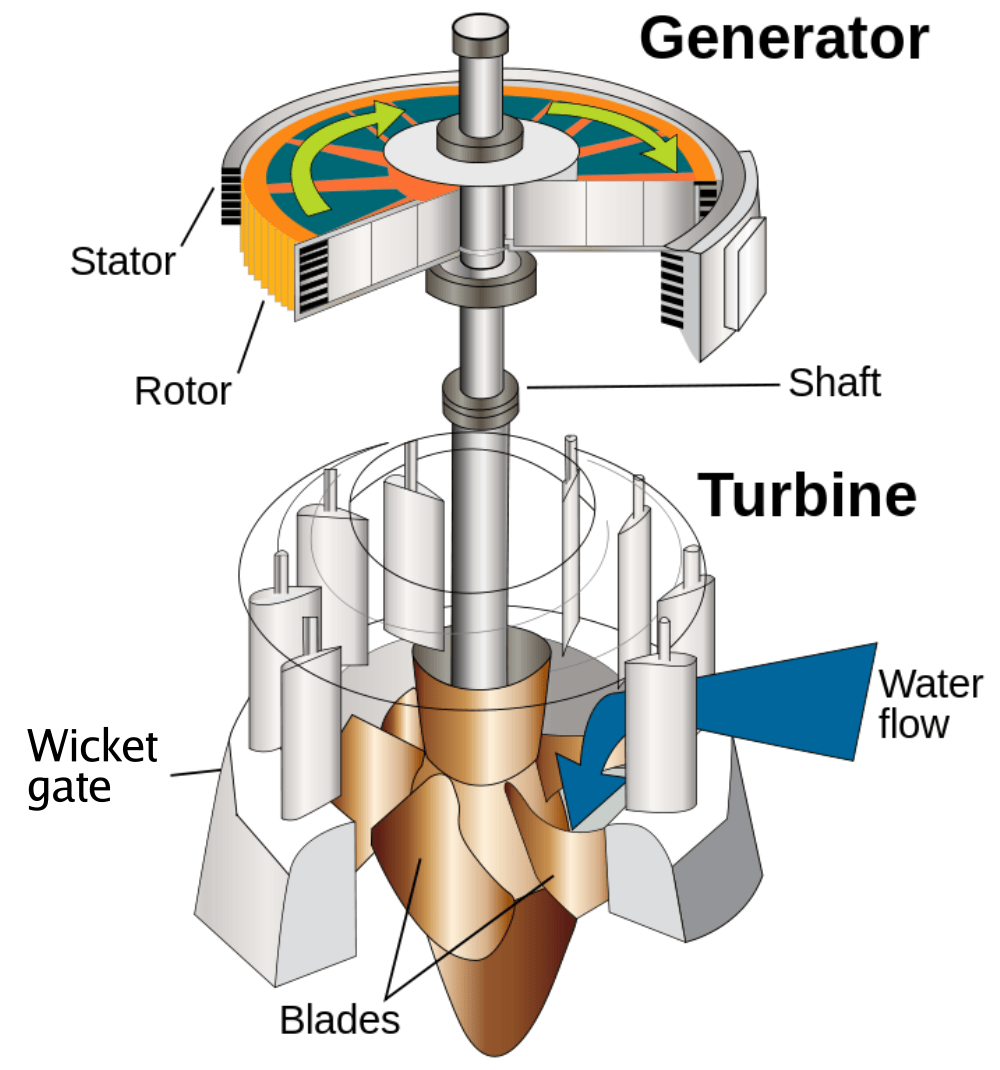
Whenever the water strikes the runner and causes it to rotate, the mechanical energy developed is supplied to the generator coupled to the runner which generates electricity.
Advantages of Hydraulic Turbine:
The Advantages of Hydraulic Turbine are as follows:
- Hydraulic Turbine's running coast is less compared to other turbines.
- It is a renewable source of energy.
- The efficiency of this system is high.
- Environmental pollution is almost zero.
Disadvantages of Hydraulic Turbine:
The disadvantages of Hydraulic Turbine are as follows:
- The installation cost is very high.
- It can be placed at only those regions where there is a surplus of water.
- The population of aquatic animals can be impacted.
Usages of Hydraulic Turbine :
The applications of Hydraulic Turbine are as follows.
- It is used for the generation of electric power in dams.
- It will control the floods in the rivers.
- The water which stays in a reservoir can be used for agriculture purposes.
This is the detailed explanation of Hydraulic Turbines. If you have any doubts, feel free to comment down below, we will get back to you.
More Resources:
Kaplan Turbine
Pelton Wheel Turbine
Hydroelectric Power plant
References [External Links]:
- Hydraulic Turbine Classification-IIT Roorkee
- Turbine Efficiency- An Overview [Science Direct]


